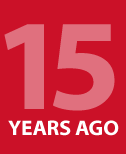Powering the Press

‘Exceptional projects for outstanding clients don’t fall off trees: You need to reach these people somehow,’ declared Brian Van Bower in his Aqua Culture column for March 2004, ‘and make your presence known.
‘There are numbers of ways of achieving this contact, and I’d argue that positive press is far and away the best vehicle for doing so. You might accomplish as much by placing ads in newspapers or magazines, but I’ve always felt that the person seeing the ad recognizes that you’ve purchased the space for self-promotion. By contrast, editorial exposure in the same newspaper or magazine is in many ways the equivalent of third-party endorsement of the work you do.’ He continued:
***
‘When prospective clients see your work in a consumer publication, they’ll interpret the appearance as validation of your professionalism and may be more inclined to seek you out. . . . Consumers will presume that the editor of a house-and-garden/shelter magazine or newspaper supplement has published your work because of its merit and your abilities and not necessarily because you are seeking new clients. It’s a wholly different twist on how and why people contact you.’
***
‘And consider what happens if you gain coverage in multiple publications: This results in clients’ telling you that they’ve seen your work “all over the place” – and that they’ve contacted you because you seem to be “hot.” It doesn’t take too many of these conversations to think that time spent on the press-relations front can yield big dividends in terms of building a reputation and gathering leads.’
***
‘But getting your work published is no slam dunk. Magazine, newspaper and book editors keep their jobs because they perform well in selecting designers and projects that appeal to their readers. This means that your work needs to fit a context and make sense for the publication.’
***
This process of setting your work down next to other projects that have found their way into print and judging your own creations with fresh and relatively objective eyes can be difficult. It takes courage and can be scary, and if you put yourself through this sort of self-evaluative exercise and can’t honestly say that your work compares favorably to what you see in print, then my advice is to wait until you have better stuff to show.’
***
‘If you have work that fits, however, the key to making inroads with editors is being able to speak their language and make yourself heard. This entails expressing what you know about design and construction and doing so with an authority that engages the editor and positions you to talk with a writer and, eventually, with readers.’
***
‘[H]aving good images of your work is one of the keys to reaching the editors who decide whose work makes it into print. With some of the larger publications, they’ll want to send their own photographers out to get exactly the shots they want, but the fact of the matter is that you usually need to generate good photography on your own just to get a foot in the door.’
***
‘In addition to . . . wide shots, I’ve also learned a very important lesson: Professional photographers and editors love shots of details – little spaces where shadows or colors or intersections of materials are compelling or beautiful or were manifestly difficult to execute.’
***
In my career,’ Brian concluded, ‘I’ve found that working with editors and writers is not difficult so long as you understand their needs. These people work at collecting and processing content for their publications, and they’re always on the lookout for interesting material. When you put your work in front of them – by whatever means – you increase the chance that they’ll turn to you for ideas and images.’
In your own career, how have you worked with the press to publicize what you do? Have you successfully established yourself as an expert? Have you found any drawbacks to this kind of exposure? What insights can you share with your colleagues? Please reach out by commenting below!
Brian Van Bower runs Aquatic Consultants, a design firm based in Miami, Fla., and is a co-founder of the Genesis 3 Design Group; dedicated to top-of-the-line performance in aquatic design and construction, this organization conducts schools for like-minded pool designers and builders. He can be reached at [email protected].










